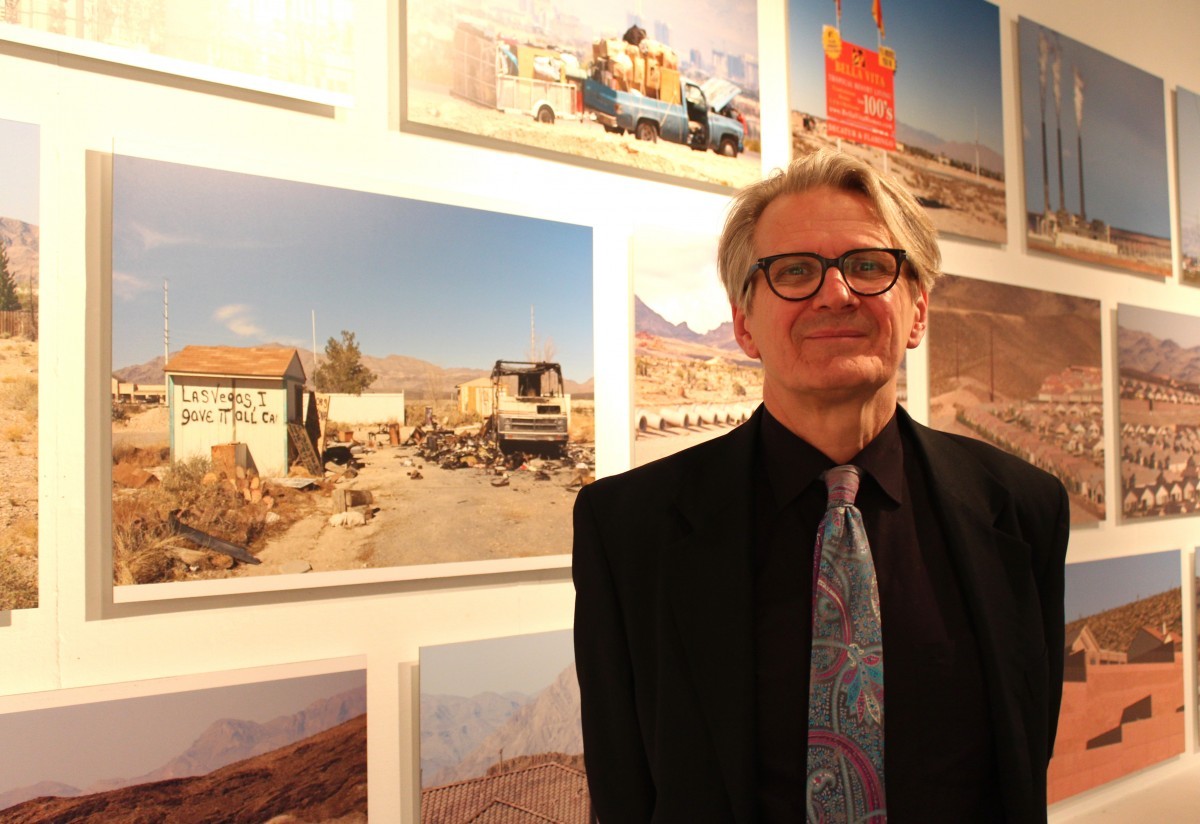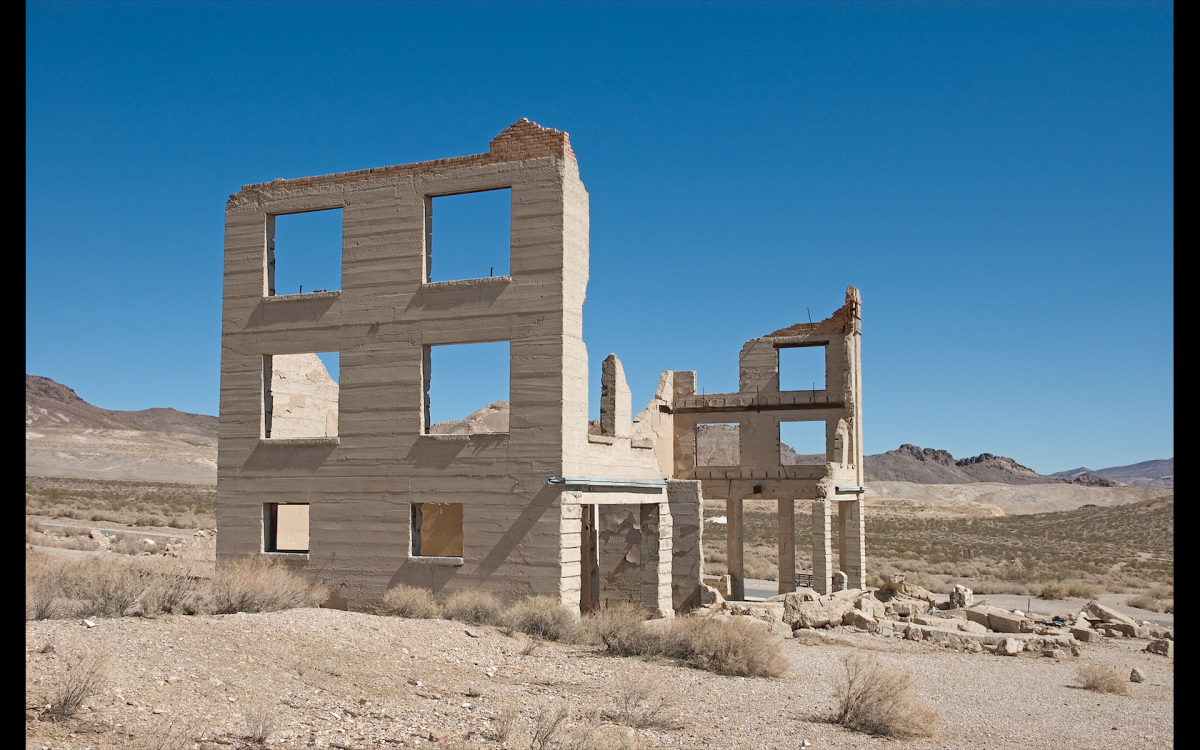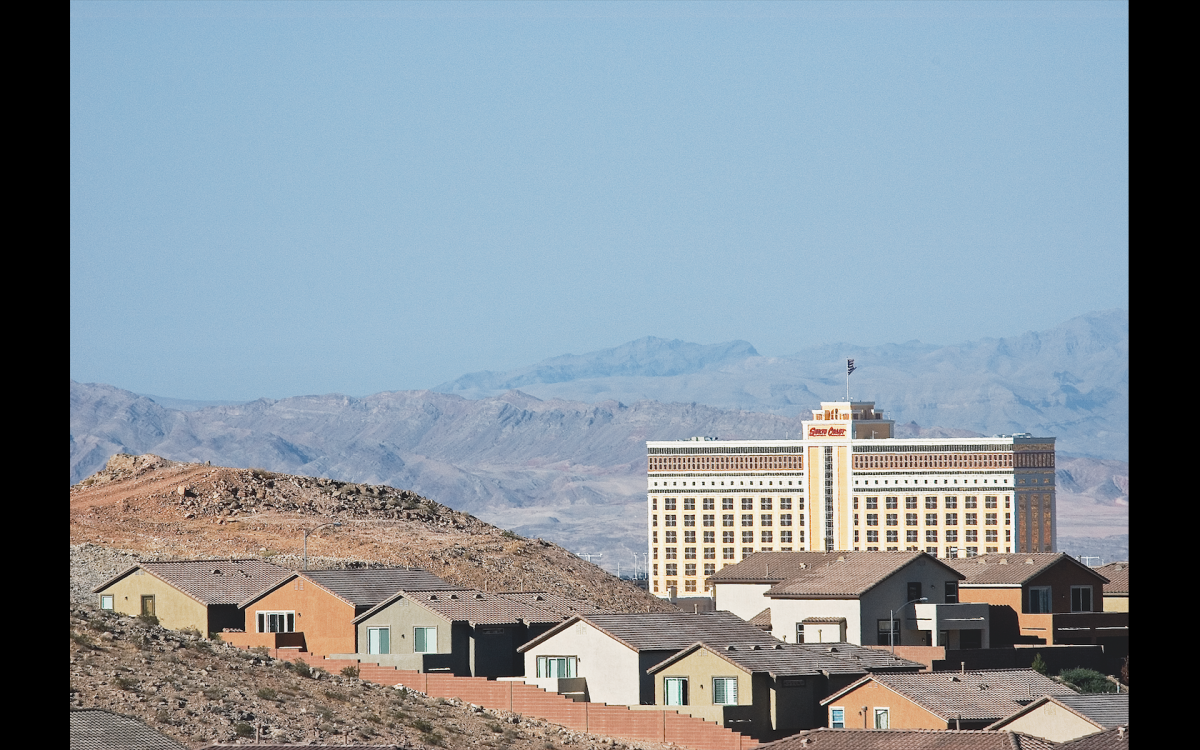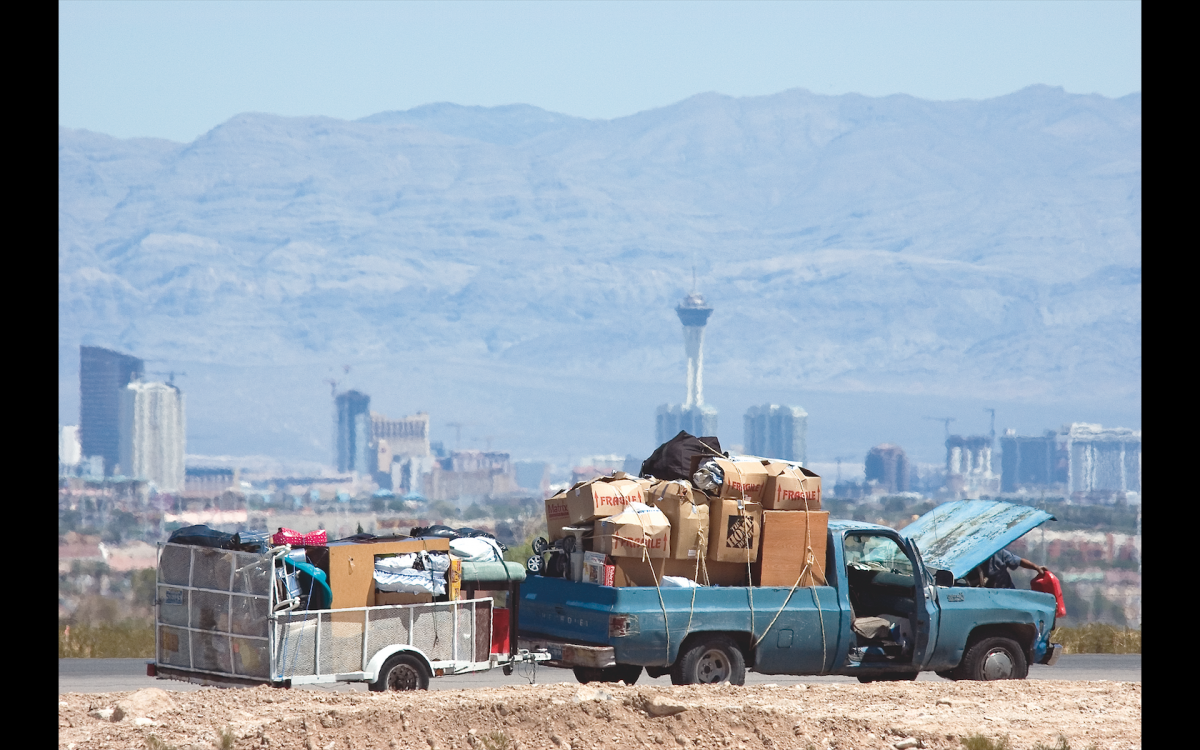
Ralph Stern, Dean of Architecture, in the Arch 2 Gallery for his photo exhibit, Urbanizing the Mojave
Urbanizing the Mojave Desert
When we think of Las Vegas it’s difficult to picture anything other than the strip and the celebratory nature of the city. The lights and glam of sin city shine brightly in promotional and travel literature, on TV and in movies – but there’s another story to be told.
Rather than looking at the strip as the iconic realization of successful urbanization in the 21st century, the real stories are around the peripheries and margins of the city says Ralph Stern, dean of the Faculty of Architecture.

Urbanizing the Mojave: A photo exhibit by Ralph Stern and Nicole Huber in the Arch 2 Gallery
“I was really curious about Las Vegas because the city was being celebrated in so many different publications as a paradigm shift, and as a successful model of urbanization. When I went to Las Vegas I thought I’m not sure I’m in agreement with this,” says Stern.
In the late 90s and early 2000s, Las Vegas was really being promoted as an example of post-industrial urbanization. It’s growth was viewed by many as how a city was giving people opportunities to advance and doing it in an environment that celebrated what once had been seen as problematic with regards to Las Vegas: gambling.

Urbanizing the Mojave: A photo exhibit by Ralph Stern and Nicole Huber in the Arch 2 Gallery
Stern started documenting these stories with photographs in 2006 with Nicole Huber, a licensed architect in Germany who is now an associate professor of architecture at the University of Washington. After collecting images for two years, the two put together a photo exhibit with a published book that followed. Both Stern and Huber were invited to present their view of the Las Vegas story at lectures and their photographs started appearing on magazine covers. The exhibit is now showing in the Faculty of Architecture’s Arch 2 Gallery.
Stern has photographed urban environments before. While living and working in Berlin, he and Huber documented the transformative change taking place in the German capital. Their work followed the developments of post-reunification Berlin, focusing on reunification, densification, sustainability – the opposite of what is happening in Las Vegas.

Urbanizing the Mojave: A photo exhibit by Ralph Stern and Nicole Huber in the Arch 2 Gallery
When Stern and Huber began working on this project, Huber likened the development in the Mojave Desert as an environmental crime story. Through their photographs the two followed clues and trails to understand what went wrong.
“In many ways now, in 2015 we’re seeing prices in California around water usage, the water crisis in the South West as a whole continues. Las Vegas’s water shortages have gotten ever more extreme and so in many ways the work was already beginning to address those issues,” says Stern.
Las Vegas simply put, is not sustainable. In addition to the water shortages, the cost of living is becoming out of reach considering the rising prices of water, fuel and power.

Urbanizing the Mojave: A photo exhibit by Ralph Stern and Nicole Huber in the Arch 2 Gallery
Economically, Las Vegas is running dry too. After the economic collapse in 2008, the city’s success story started to change. Property development along the strip or in the sprawling suburbs surrounding the city have dropped dramatically. The huge number of foreclosures have dropped the average price of resale homes by over half.
“It’s a huge disruption in the success story narrative in Las Vegas,” says Stern.
Urbanizing the Mojave Desert runs until Tuesday, April 28 in the Arch 2 Gallery. For more details visit the event listing.






